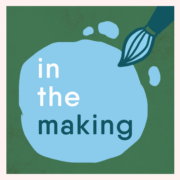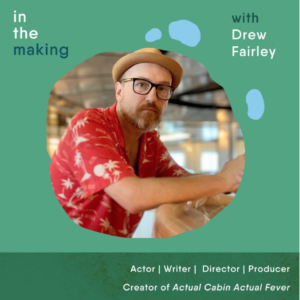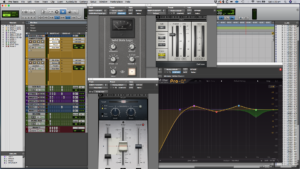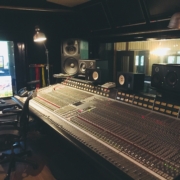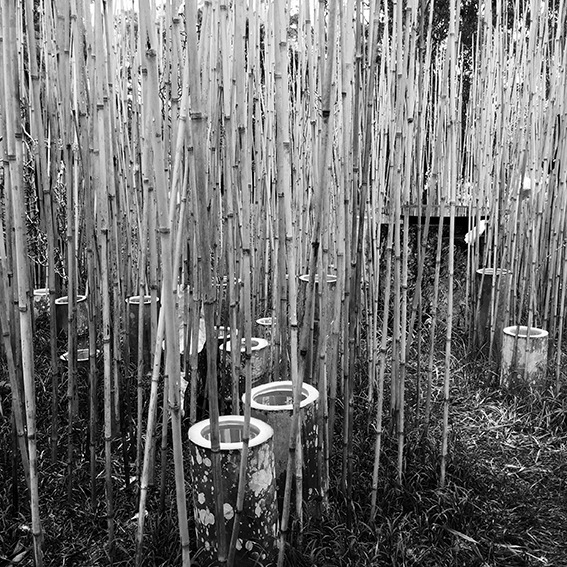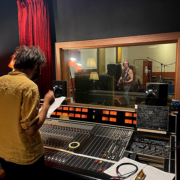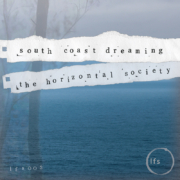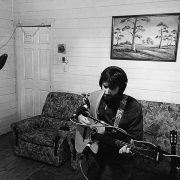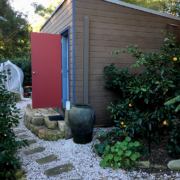In The Making Podcast by Make Shift
Recently I’ve been doing the audio post production on a new podcast by Make Shift called In The Making.
I’m really enjoying the content; it’s all about the arts and the use of creative practices for best mental health. Within each episode, the host, Jennifer Macey interviews artist from various disciplines about their creative practice and the role of creativity in their mental health.
The first two episodes are currently available from all the usual outlets and feature the fabulous Australia creators, Kirli Saunders and Drew Fairley. Click on the images below to access the podcasts from Spotify. Alternatively here’s Make Shift‘s page on Spotify.
From an audio production perspective, it has been enjoyable to ponder best practice for podcasts, and as a result below is a reflection on my current signal chain.
For the main interviewee and interviewer audio, the processing and order of processing that has been working thus far is:
1. UAD SSL G Bus Compressor with a quick attack time and a gentle ratio to control the dynamics
2. Waves DeEsser to tame any sibilance
3. Fab Filter Pro-Q3 to add some warm in the low mids, some articulation in the mids and some further control of the sibilance/ high frequencies around 8-10kHz via dynamic EQ, see the EQ curve pictured above.
4. Waves Vocal Rider to level the differences in levels through the recording
Beyond that chain of plugins, a further bit of volume automation has helped control perceived levels that the AI of Vocal Rider hasn’t addressed. Secondly, some Izotope RX 7 De-Clip has also been used to remove any clipping that occurred mid interview.
All the vocal content/ channels have then been bused to a Vox Bus channel where a touch more compression and EQ has been applied to polish the sound.
Beyond vocal content, the podcasts have all made use of some atmospheric sounds and music. These channels of content have been routed to a Music Bus where some side-chain compression has been applied so that the Vocal Bus will compress or duck the musical content to ensure that the vocals are always the focus or dominant sound.
Both the Vox Bus and the Music Bus then route to the master bus. The processing on this final bus is pictured below.
The master bus chain is currently:
- UAD Studer 800 – applying some gentle harmonic warmth and some dynamic and upper frequency gentle moulding
- Oeksound Soothe 2 – a dynamic EQ, for lack of a better description, that looks for resonances. In this case Soothe 2 has been used to reduce resonances that plague the type of playback devices that podcast listeners will typically use, ie laptop speakers and earbuds.
- Slate Digital VBC FG-Grey – this compressor is one of my favourite mix bus compressors and in this case has then been used to glue the whole mix. The setting used are a slow attack and quick release with a gentle ratio for minimal gain reduction.
- Fab Filter Pro-L has finally been used to bring the level up to the desired professionally competitive level. Generally it is held that podcasts only require an RMS of between -16 to -12dB. So this was the level aimed for.
I hope you enjoy the In The Making series, I know I’m enjoying the content as I polish it.
For more tips on podcast production, there is a good introductory article by Izotope that I would recommend reading entitled 10 tips for a great sounding podcast.

